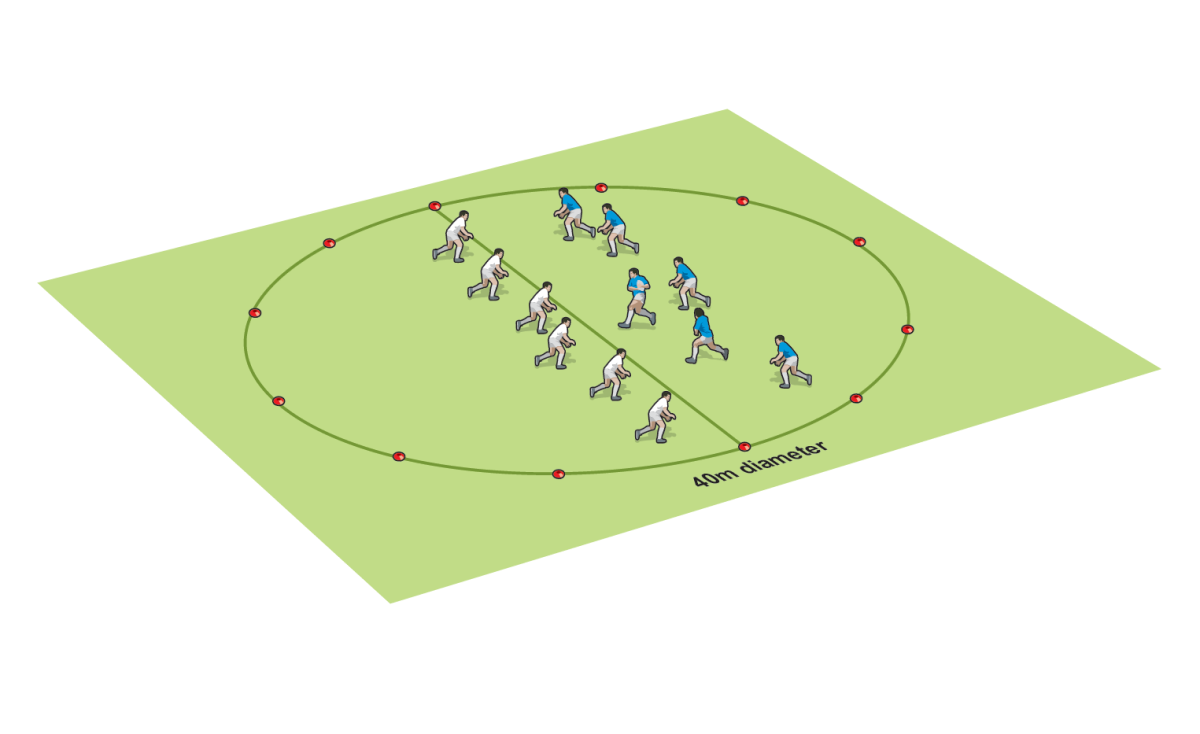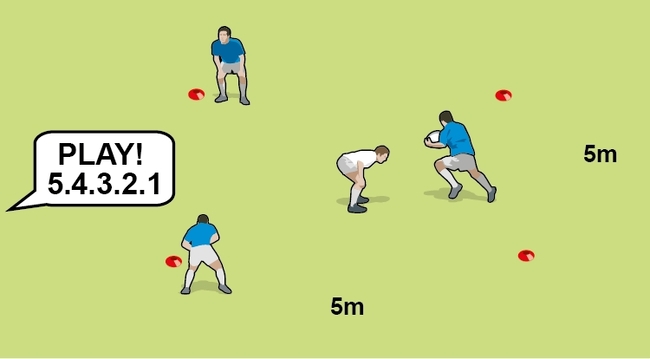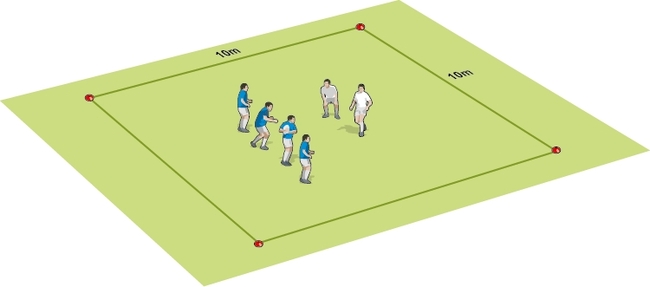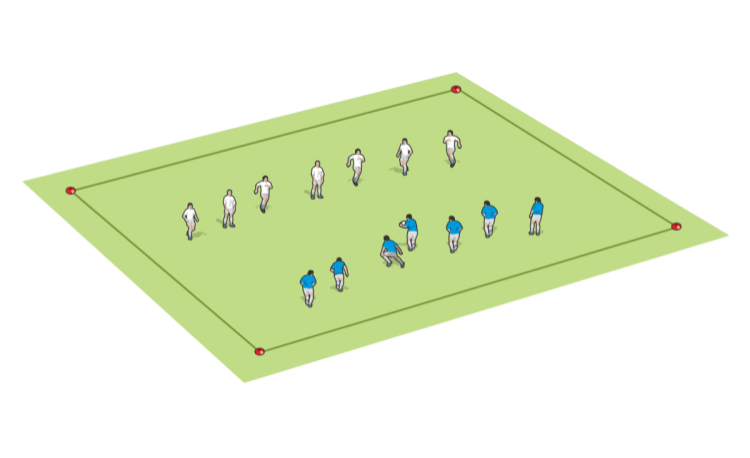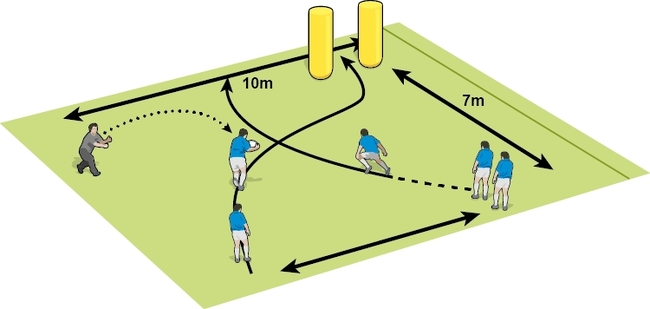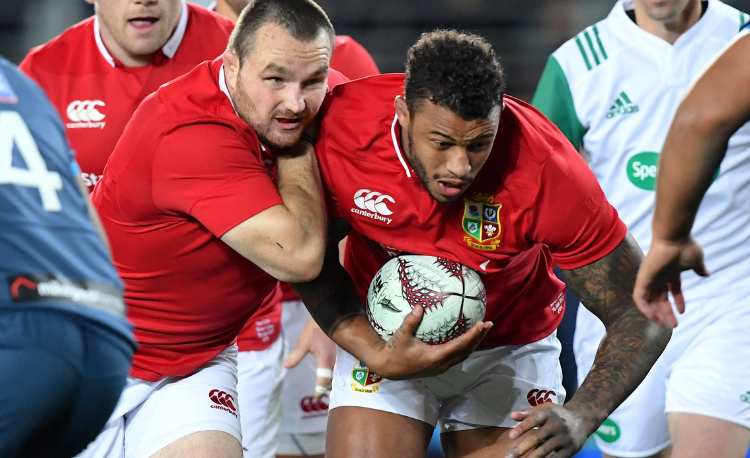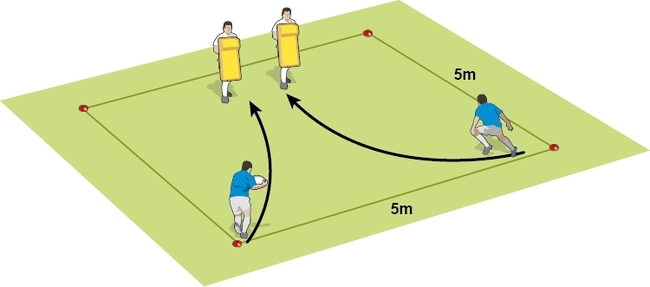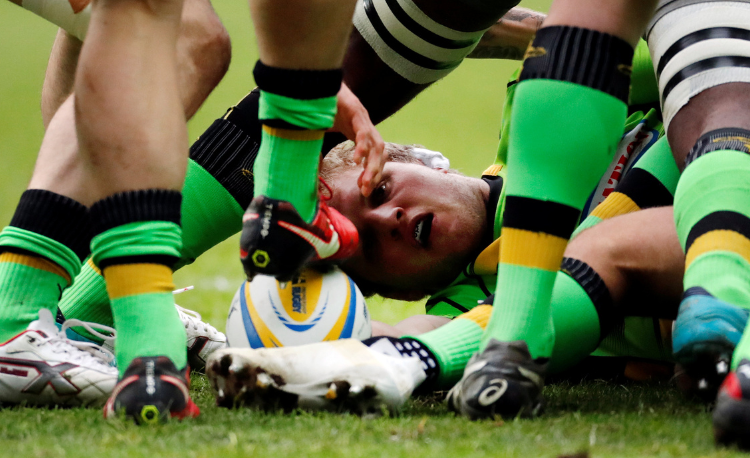Go round in circles to create width in attack
This unusual pitch set-up will pose problems for your players to solve. They will need to use good handling and support to get wide.
Set up a normal game of touch, with the players inside a large circle.
The try line for one team is one half of the circle, and the try line for the other team is the other half.
Though it seems obvious to us, the players take some time to work out that the easiest place to score is on the edges of the pitch, which is by the halfway line. After a time, they will start to probe the width of the pitch, spreading out the defence.
You can ask the players how they might want to restart the game after a try – where the attack and defence restarts the game from or if the team that just conceded gets the ball.
You can also adjust the size of the circle, with the players deciding how big they want the pitch and moving the cones out.
Another option is to create different scoring zones. Perhaps make the edges 3 points for a try and the middle 5 points.
I like to give the sides the option to create a target, like the first to 50. Then the players are thinking tactically about whether to go for the easier points at the edge rather than the harder but more rewarding points in the middle.
- The blue try line starts here
- Ask the players if they need to adjust the size of the pitch
- You can adjust the scoring zones, so it could be 5 points for tries scored nearer the centre and 3 points by the edges
- Ask the players how they want to restart after a try
Constraints for continuity and footwork
When the game starts, I will introduce and apply constraints to improve their processes. In this handling-type game, I’m looking for continuity and movement. I don’t want them to be putting the ball on the ground after a touch. If they are touched, they should be looking to move the ball straight away.
My first constraint is that it’s a turnover if the ball goes on the ground after a touch. To begin with, if a player is touched, they tend to put the ball through their legs. I immediately blow the whistle and call “Turnover!”. I don’t tell them why. After a while, they start to work it out and shout to each other to avoid doing it.
My second constraint is that a player who is touched square on – that is, they run straight into a defender – is penalised with an immediate turnover. Again, I whistle but give no explanation. The players soon learn to use evasive skills to avoid a square touch.
Ask the players for their ideas, too.
Secret rules
You will note that, for some of the constraints, I won’t tell the players before the game what they are. I will simply whistle and call turnover. This creates more communication between the players and awareness of what they have to adjust.
Self-organising
My style of coaching this type of activity is based on delegation. I pose problems to the players and they have to find answers themselves. For example, they might say they want to improve handling. I then turn that into questions about the principles of play – such as, which principles of play will support this objective? Once the game starts, I certainly won’t be giving them any clues on the tactics. I will ask them if they want to change the dimensions of the game, though.
Related Files
Newsletter Sign Up
Coaches Testimonials

Gerald Kearney, Downtown Las Vegas Soccer Club

Paul Butler, Florida, USA

Rick Shields, Springboro, USA

Tony Green, Pierrefonds Titans, Quebec, Canada
Subscribe Today
Be a more effective, more successful rugby coach
In a recent survey 89% of subscribers said Rugby Coach Weekly makes them more confident, 91% said Rugby Coach Weekly makes them a more effective coach and 93% said Rugby Coach Weekly makes them more inspired.
Get Weekly Inspiration
All the latest techniques and approaches
Rugby Coach Weekly offers proven and easy to use rugby drills, coaching sessions, practice plans, small-sided games, warm-ups, training tips and advice.
We've been at the cutting edge of rugby coaching since we launched in 2005, creating resources for the grassroots youth coach, following best practice from around the world and insights from the professional game.
